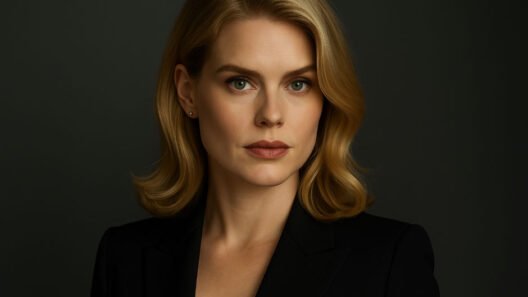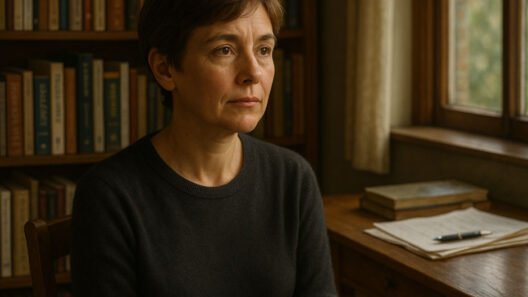Early Life and Musical Foundation
Alex Ryan’s musical journey started across the Irish Sea in England, but Ireland quickly became his adopted home and creative playground. Growing up between two cultures gave him something special – an ear for different musical traditions that most musicians spend years trying to develop. You could say he got a head start on understanding what makes music truly universal.
Trinity College Dublin wasn’t just another stop on Ryan’s educational journey – it was where everything clicked into place. Picture this: a young musician diving deep into music theory while jamming with future stars in practice rooms that probably saw more late-night sessions than the library. When he walked away with a First Class degree in Music in 2013, it wasn’t just a piece of paper. It was proof that he’d mastered both the science and the art of making music.
What set Ryan apart from his classmates wasn’t just his natural talent – it was his hunger to understand music from every angle. While some students focused purely on performance, Ryan was the guy asking questions about arrangement, theory, and production. This curiosity would later become his secret weapon in the professional music world.
The Hozier Connection
Sometimes the best partnerships happen by accident, and that’s exactly how Alex Ryan met Andrew Hozier-Byrne at Trinity College Dublin. Two music students with completely different styles but the same obsession with creating something meaningful. While other students were networking at parties, these two were probably in some corner discussing chord progressions and arguing about the perfect bass tone.
Their friendship had that rare quality – it just worked. Ryan’s technical precision balanced Hozier’s raw emotional power perfectly. When Hozier started gaining attention for his unique sound, bringing Ryan on board as Musical Director in May 2014 felt less like a business decision and more like destiny calling.
The timing couldn’t have been better. Hozier was on the verge of breaking through to international success, and Ryan’s musical direction helped turn those breakthrough moments into career-defining performances. It’s one thing to have great songs; it’s another to have someone who can translate those songs into live experiences that give people goosebumps.
Studio Achievements and Album Contributions
Here’s where Ryan really proved his worth – not just as a bass player, but as a musical architect. His work on Hozier’s debut album wasn’t about showing off flashy techniques or stealing the spotlight. Instead, he crafted bass lines that became the invisible foundation holding everything together. When that album went platinum in eleven countries, Ryan’s fingerprints were all over its success.
Listen to any track from that debut album, and you’ll hear Ryan’s philosophy in action. His bass doesn’t compete with Hozier’s vocals or guitar work – it supports them, elevates them, makes them shine brighter. That’s the mark of a musician who truly understands his role in the bigger picture. It’s harder than it sounds, and Ryan makes it look effortless.
But Ryan didn’t stop at bass guitar. His piano contributions added another layer of depth to various tracks, proving he’s not just a one-trick pony. This versatility became even more valuable on later albums like “Wasteland, Baby!” and “Unreal Unearth,” where his musical input helped shape Hozier’s evolving sound. Each album showcased Ryan’s ability to grow alongside the artist he supports, adapting his style while maintaining the core elements that made their collaboration work in the first place.
Live Performance Excellence
Picture this: you’re a bass player from Dublin, and suddenly you’re standing on stage at the Grammy Awards next to Annie Lennox. That’s exactly what happened to Alex Ryan in 2015, and he handled it like he’d been performing on the world’s biggest stages his entire life. The Grammy performance, along with appearances at the Billboard Music Awards, marked Ryan’s arrival as a major player in the international music scene.
But the real test came with those legendary TV appearances. David Letterman, Ellen, Jimmy Fallon, Seth Meyers, Jimmy Kimmel – each show brought its own challenges and pressures. Television performances are notorious for their technical constraints and limited rehearsal time. One mistake, and millions of viewers see it happen live. Ryan navigated these high-pressure situations with the kind of cool professionalism that separates the pros from the wannabes.
What’s impressive isn’t just that Ryan performed well on these shows – it’s how he managed to maintain his musical identity while adapting to each show’s unique requirements. Whether it was adjusting to different stage setups, working with house bands, or dealing with last-minute changes, Ryan proved he could roll with whatever the entertainment industry threw at him. That adaptability became crucial during the extensive touring that followed, where every venue brought new acoustic challenges and audience expectations.
Beyond the Bass: Compositional Work
Ryan’s talents extend far beyond just laying down killer bass lines. His string arrangements for Hozier showcase a completely different side of his musical brain – the part that thinks in orchestral colors and emotional textures. Writing for strings requires a special kind of musical imagination, and Ryan’s arrangements prove he’s got it in spades.
His film work tells another story entirely. Soundtracks for movies like “Darkness on the Edge of Town” and “Gemini” demanded a different approach – music that serves the story without overwhelming it. Ryan’s success in this area shows he can step outside his comfort zone and create music that enhances visual narratives. That’s not easy, and it’s opened doors to opportunities most bass players never see.
Working with other artists like Saint Sister has given Ryan a chance to flex his production muscles. It’s one thing to support an artist you’ve worked with for years; it’s another to quickly understand a new artist’s vision and help bring it to life. These collaborations have built Ryan’s reputation as someone who can adapt his skills to serve different musical visions.
Solo Projects and Creative Ventures
When Ryan steps out from behind the bass to create his own music under the name Ring Saigo, you get to hear his unfiltered artistic voice. These releases show a different side of his creativity – one that’s not constrained by supporting another artist’s vision. It’s where Ryan gets to be the primary storyteller instead of the supporting character.
The Black Fox Leash project with his brother Patrick brings family dynamics into the mix. Described as “Fox rock with a rolling kick,” it’s proof that Ryan can work successfully within family relationships while maintaining professional standards. Their debut single “The Fire” shows yet another facet of Ryan’s musical personality, one that might surprise fans who only know him through his work with Hozier.
These independent projects serve multiple purposes. They keep Ryan’s creative fires burning, maintain his visibility as an individual artist, and prove he’s not just a sideman. In an industry where musicians can easily get pigeonholed, Ryan’s solo work ensures he remains a multifaceted artist with options.
Technical Expertise and Musical Style
Ryan’s approach to bass playing is refreshingly straightforward – serve the song, not your ego. His style emphasizes groove and feel over flashy techniques, creating the kind of foundation that makes other musicians sound better. It’s a philosophy that requires both skill and restraint, and Ryan has mastered both.
His equipment endorsements from Skjold Basses and Gallien Krueger aren’t just business deals – they’re recognition from respected manufacturers that Ryan represents the kind of musicianship they want associated with their products. When gear companies put their reputation behind an artist, it means something in the professional music world.
Ryan’s digital production setup reflects the modern reality of music-making. His laptop-based system, loaded with quality plugins and samples, allows him to contribute to projects from anywhere in the world. This technical flexibility has become crucial as the music industry has embraced remote collaboration and digital distribution.
What really sets Ryan apart is his ability to quickly understand and adapt to new musical situations. Whether it’s learning a new song, working with unfamiliar artists, or adjusting to different recording environments, Ryan’s combination of formal training and practical experience allows him to contribute effectively from day one.
Industry Recognition and Future Prospects
The fact that Ryan continues to work with Hozier after all these years says something important about their partnership. In an industry known for ego clashes and creative differences, their ongoing collaboration suggests a rare combination of personal compatibility and artistic growth. As both artists continue to evolve, their partnership seems to strengthen rather than strain.
Ryan’s expanding work in film composition and production points toward exciting future possibilities. As streaming platforms create more demand for original content, composers with Ryan’s combination of technical skill and creative vision are increasingly valuable. His ability to work across different musical contexts positions him well for whatever opportunities emerge.
The evolution of Ring Saigo represents Ryan’s ongoing development as a primary artist rather than just a collaborator. As this project continues to grow, it could open entirely new career paths and creative possibilities. The music industry loves artists who can wear multiple hats, and Ryan has proven he’s comfortable in several different roles.
Ryan’s story demonstrates that success in music often comes from combining formal training with real-world experience, technical skill with creative vision, and individual talent with collaborative spirit. As the industry continues to change, musicians like Ryan – who can adapt, collaborate, and create across multiple contexts – will likely find themselves with more opportunities than ever before. His journey from Trinity College student to international performer proves that sometimes the best career moves are the ones that feel like natural progressions rather than calculated leaps.








